
Gaps in regulations could allow invasive species to hitch a ride on ships and boats. We report on some of the potential impacts, and how state and federal agencies are trying to solve the problem.

Jackie Gardner carefully lifted the crab trap out of the shallow backwater lagoon at Zelatched Point on the Olympic Peninsula. Dozens of crabs, no more than an inch across, began scurrying over, under and around each other inside the cage.
Gardner shook the frantic little crabs out into a small, white tub. A few minutes later, a half-dozen volunteers were staring into the vessel, preparing to sort and count their catch.
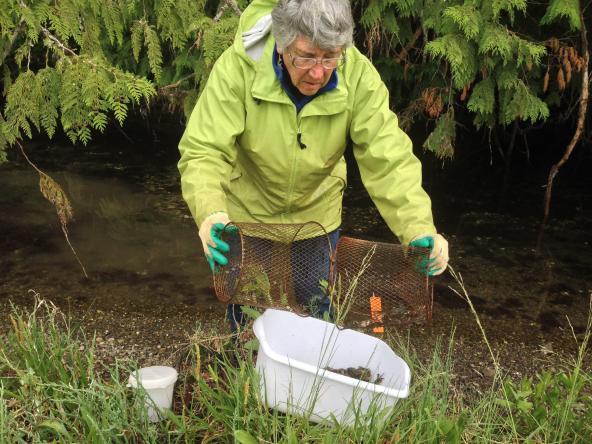
“I think they are all hairy shores,” said HR Bohman, using the shortened name for “hairy shore crab,” a native crab found in Puget Sound. Working together, the volunteers inspected the little crabs, placing males into one bucket and females into another. Ten of each sex were randomly selected and measured.
Out of six traps, 580 crabs were caught this day, 78 percent of them male. Except for a couple hermit crabs, they were all “hairy shores” — and that was good news.
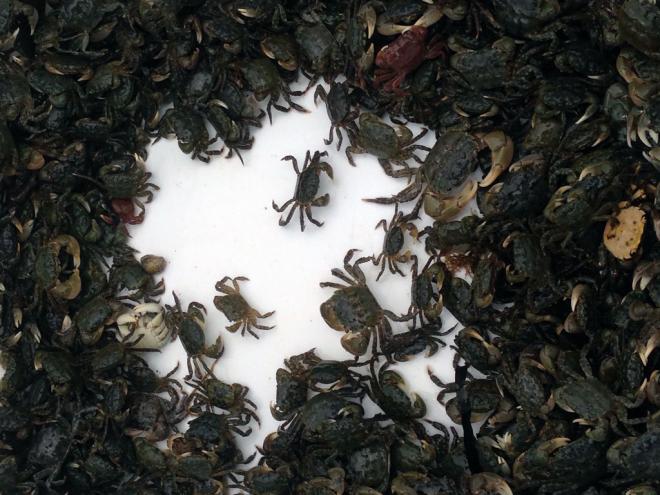
It would be a truly bad day if this team of volunteers — or any of the 22 teams working throughout Puget Sound — actually caught what they were looking for: an invasive species called the European green crab, known in some places as the green shore crab or European shore crab.
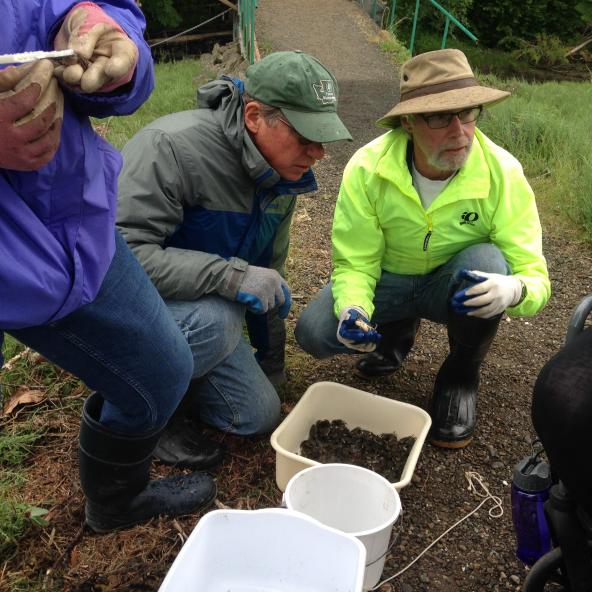
This aggressive, voracious crab has displaced natives in several locations along the East Coast and helped devastate the soft-shell clam industry in New England. Green crabs can kill Dungeness crabs of equal or lesser size, according to one study, raising concerns among Washington’s commercial and recreational crabbers, as well as Puget Sound oyster and clam growers.
Related storyGreen crabs could impair Puget Sound shellfish operations
Concerns over the potential damage of green crabs to the ecosystem have inspired a small army of volunteers. A search is underway for early signs of an invasion. [Editor's note: Since this article was written, green crabs have been discovered in two separate locations in Puget Sound.]
As worrisome as it is, the green crab is just one of a number of species on the Puget Sound watch list. Many are already here. So far, experts have identified 74 non-native species living in Puget Sound, according to a report by Aquatic Bioinvasion Research & Policy Institute at Portland State University. These range from viruses, bacteria and microscopic plankton to large nonnative fish. Nearly half were found in the past 20 years.
Related storyInvasive marine species: Washington state priorities
The Washington Invasive Species Council evaluated more than 700 invasive species in and around Washington, considering their threats to the state’s environment, economy, and human health. They included terrestrial plants and animals, aquatic plants and animals (both freshwater and saltwater), insects and diseases. In the end, the council listed 50 “priority species” for action, including five marine animals and two marine plants, along with one virus that infects fish.
The term “invasive species” typically refers to non-native species that create undesirable effects on the ecosystem. They can prey directly upon native species, compete with them for food or space, or introduce new parasites or diseases.
Pathways for invaders
Although there are multiple ways invasive species can travel among water bodies, the pathways of greatest concern among regulators are associated with ships and boats coming into Puget Sound. Ships may discharge ballast water containing thousands of tiny hitchhikers — including, potentially, green crab larvae — or they may arrive with invasive organisms encrusting their hulls or in out-of-the-way spaces, such as anchor systems and ballast intakes, a condition known as biofouling.
Through the years, state and federal authorities have developed special rules for other major pathways for invasives, such as aquaculture. But regulations to prevent infestations from ships and boats are still in flux at both the state and national levels, where stronger rules are being hotly debated.
Most of this discussion is centered on ballast water, which is currently regulated by two federal agencies, the Coast Guard and Environmental Protection Agency. Both agencies are moving toward requirements for advanced treatment of ballast water before it is released.
Until treatment requirements go into effect, vessels arriving from foreign countries must exchange their ballast water at sea, which greatly reduces the number of organisms that can survive in coastal waters. Coast Guard rules require no exchange, however, for ships coming into Washington from California, where San Francisco and other ports are highly infested with invasive species.
To fill this gap, the state of Washington requires ballast exchange for ships arriving from ports outside the “common waters zone,” which stretches from the Columbia River to just north of Vancouver, B.C. Ships from California must exchange their ballast water at least 50 miles off the coast under state rules. But ships coming from areas near the mouth of the Columbia River are not required to exchange their ballast water, leaving the door open for invaders from an area known to have marine species not found in Puget Sound.
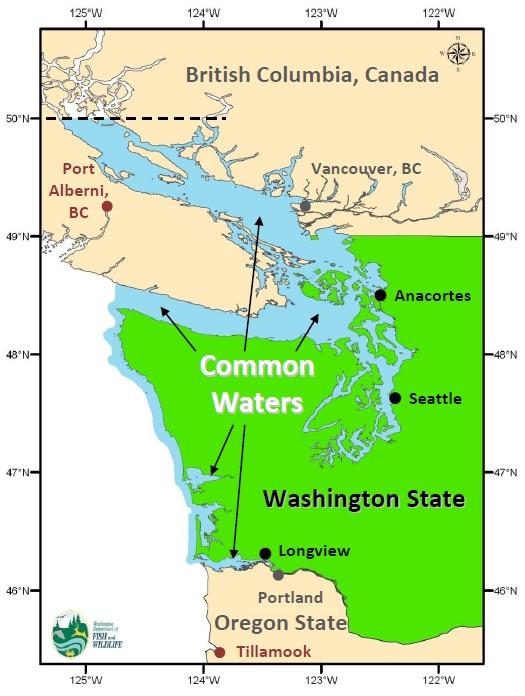
The numbers: Invasive species and ships
On average, 920 different vessels made 3,200 trips into Puget Sound each year from 2008 to 2011. Over the four-year period, 2,383 different vessels came into the Sound, and about half came only once, according to a 2015 study by Jeff Cordell and Olga Kalata of the University of Washington’s School of Aquatic and Fisheries Sciences. About three-fourths of the vessel traffic was headed to the ports of Seattle or Tacoma.
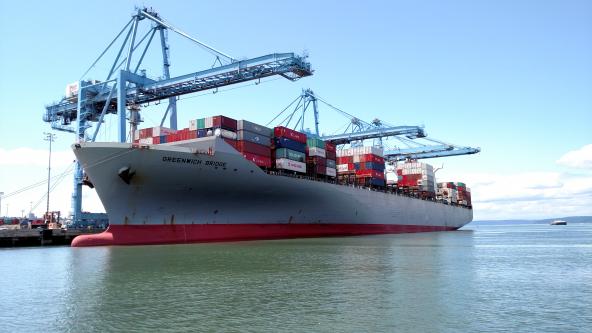
Ships coming into the waterway discharged more than 1.7 billion gallons of ballast water per year.
During the study by Cordell and Kalata, 55 species of non-native zooplankton were found in the ballast water of 816 ships arriving in Puget Sound. More species were found in ships crossing the ocean than in ships traveling up the coast.
Among the types of ships, tankers discharge ballast water with the greatest density and total numbers of high-risk invasive species, according to the study. One explanation is that many of the tankers come up the coast from highly infested areas in California, and the short trips allow more of the plankton to survive.
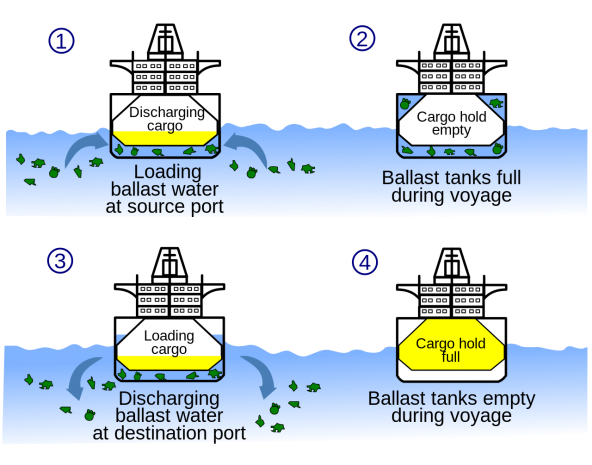
Coping with copepods
That may be the case in Samish Bay near Bellingham, where a tiny free-swimming invader appears to be growing in number and threatening to tip the balance for key species in the food web. This microscopic organism is a crustacean, specifically an Asian copepod named Oithona davisae.
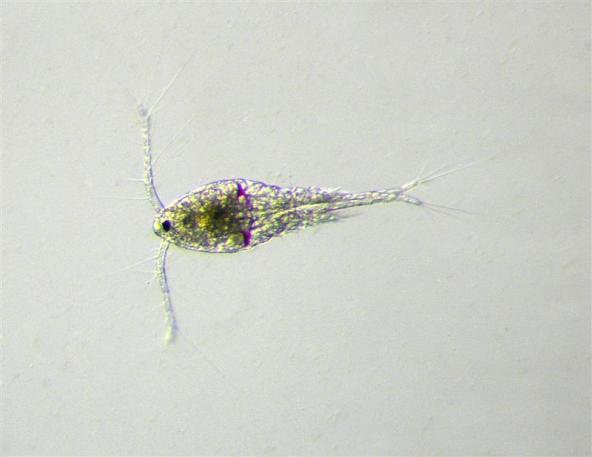
“This Asian species is about a tenth the size of native copepods,” UW’s Cordell says. “It appears to have outcompeted them and completely switched the plankton community in Samish Bay. We don’t know all of the ramifications, but they are taking over, and there are a lot of them.”
Native copepods are important prey for herring and other forage fish. As their name suggests, forage fish provide food for other species — among them salmon — so this shift in the plankton community is no small thing, Cordell says. Because of their size, the invasive copepods are more difficult for fish to see, and they have a different mode of swimming to escape predators. As a result, the Asian species may be especially detrimental to visual predators, such as fish, while benefitting nonvisual predators, such as jellyfish.
Cordell’s study of ballast water from more than 500 ships coming into Puget Sound revealed that the Asian copepod likely arrived on ships visiting the nearby Cherry Point terminal. Many of those ships take on ballast water from infested areas in California, he said.
Addressing the problem
The potential problems associated with ballast water are not going unnoticed and there have been a number of solutions proposed — and debated — by officials and lawmakers.
Requiring some type of treatment to kill organisms in ballast water is the latest approach taken by the Coast Guard, but mandatory treatment has been delayed until new equipment can be proven effective and certified for use. As written, new rules would not require ballast treatment for vessels traveling within U.S. waters — including ships coming into Washington from heavily infested areas in California. And controversial federal legislation, pushed by the shipping industry, would strip the EPA and the states of authority to issue their own rules. The legislation was passed by the House as a rider on a Department of Defense bill, but it was left out of the Senate’s companion bill, so its future remains uncertain.
The shipping industry has been a strong advocate of the legislation, saying differing state standards make it difficult to comply, especially when dealing in international and interstate commerce.
“Within our state, vessels are in high compliance with our regulations, and we have staff helping them all the time,” said Allen Pleus, coordinator of the Aquatic Invasive Species Program at Washington Department of Fish and Wildlife. “We are not punitive. Our standards are nothing more than needed to protect our state waters.”
The Cordell-Kalata study also reported that ships taking on ballast water at the Columbia River brought in high numbers of invasive species. As these ships remained within the common waters zone, they were not required to exchange their ballast water before discharging it into Puget Sound. The result is a greater risk of spreading invasive species from one place to another.
“Thus, we recommend that common waters exemptions for ballast water exchange or treatment be evaluated with these risks in mind,” the authors conclude in their report.
Samples collected over the course of the study show decreasing numbers of non-native species in ballast water, suggesting increasing compliance with ballast regulations. Reasons may include increased state inspections and a growing awareness of efforts to control invasive species.
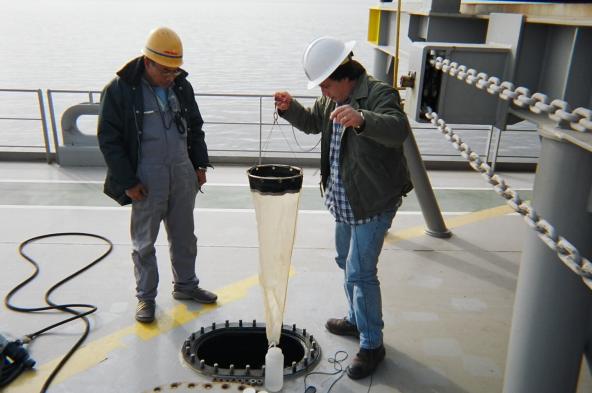
Biofouling still mostly unregulated
Of the 74 non-native species in Puget Sound, six species almost certainly arrived by attaching to the hull of a ship — the condition known as biofouling — and 37 could have arrived that way. As state officials move to control the release of invasive organisms in ballast water, biofouling has emerged as the most likely way for invasive species to get into Puget Sound.
Approaches to removing species attached to ship hulls include treating the hulls with special paint or simply cleaning them off. According to maintenance reports, 80 percent of commercial ships have biocide-based anti-fouling paints on their hulls to prevent organisms from growing. However, records show that most have not cleaned their hulls since dry-docking or initial delivery.
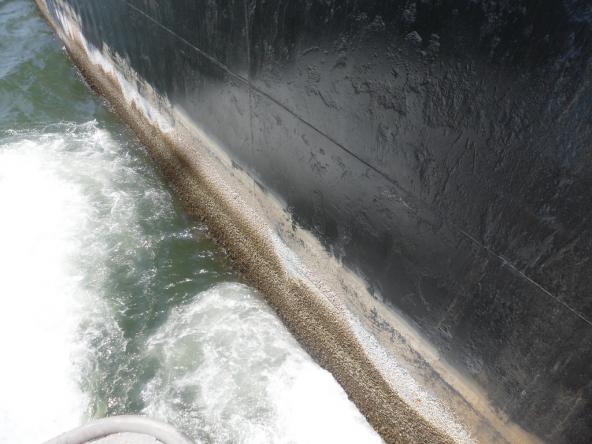
About 88 percent of recreational vessel owners said they used anti-fouling paint on their boats. More than half said they had cleaned their boats since the last haul-out, and more than half of that group admitted cleaning their boats in the water. For boats with biocide-based paints, state regulations prohibit in-water cleaning to reduce harmful exposure to native species.
The state currently has no specific program to control biofouling, but the Department of Fish and Wildlife is developing a six-year strategic plan that could create a new program to assess and reduce the risks. The plan is to be submitted to the Legislature by the end of 2016. The state is developing a separate strategic plan for ballast water.
Also up for review by the Legislature is how to pay for the state’s Aquatic Invasive Species Program, which has sustained cutbacks. The program now operates with the lowest budget since 2007. Washington’s $430,000 program in 2014 compares to California at $5.9 million, Idaho at $1.4 million, British Columbia at $1.1 million and Oregon at $810,000.
The program is currently supported with a $2 annual fee on registered boats. An advisory committee, including representatives of interest groups, recommended creating new fees on smaller watercraft, commercial watercraft, seaplanes, out-of-state watercraft and sales of aquarium products. Most committee members also support a fee on shipping vessels large enough to carry ballast water, according to the committee’s report, but the idea was rejected by representatives of the shipping industry and public ports association.
“There is a lot we would like to do,” said Pleus of Fish and Wildlife, referring to the ongoing budget crunch. “We are doing so little on biofouling, and we need more education and outreach. For me, the biggest issue is resources.”
Other pathways
Although ships are a central focus among regulators, they are not the only source of biofouling. Other potential pathways include “aquatic plant shipments, live bait, the aquarium trade, live seafood, movement of maritime infrastructure, and floating marine debris,” according to a report by the University of Washington Puget Sound Institute. The report analyzes grant results related to studies of biofouling from Puget Sound’s EPA-funded marine and nearshore grant program.
However, the report calls for more studies to provide better data for analysis. “The lack of data on impacts of marine and estuarine non-indigenous species (NIS) established in the region hampers analyses of risks associated with these species,” reads the report. “The authors’ review of the scientific literature found that impacts of only 39% of known NIS occurring in Puget Sound had been evaluated in published papers. Of the 138 papers on these species, only 13 included data collected in Washington.”
Related storyBuilding a baseline of invasive species in Puget Sound
Almost twenty years ago, volunteer biologists began an intensive survey for invasive species in the marine waters of Puget Sound. In a little over a week of hunting, they found 39 such species, including 11 never before seen in the region.

